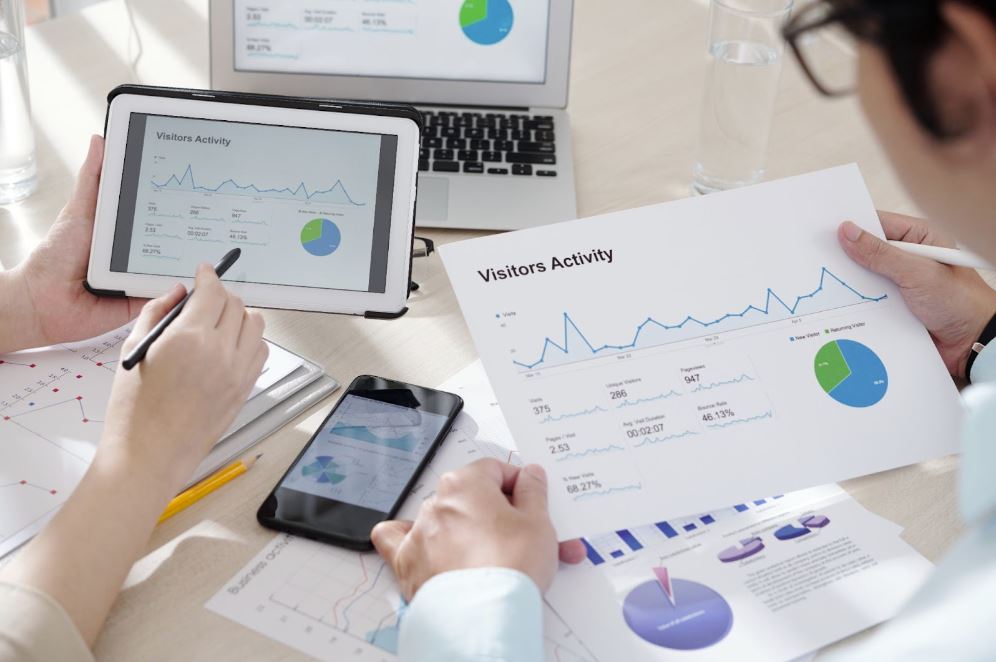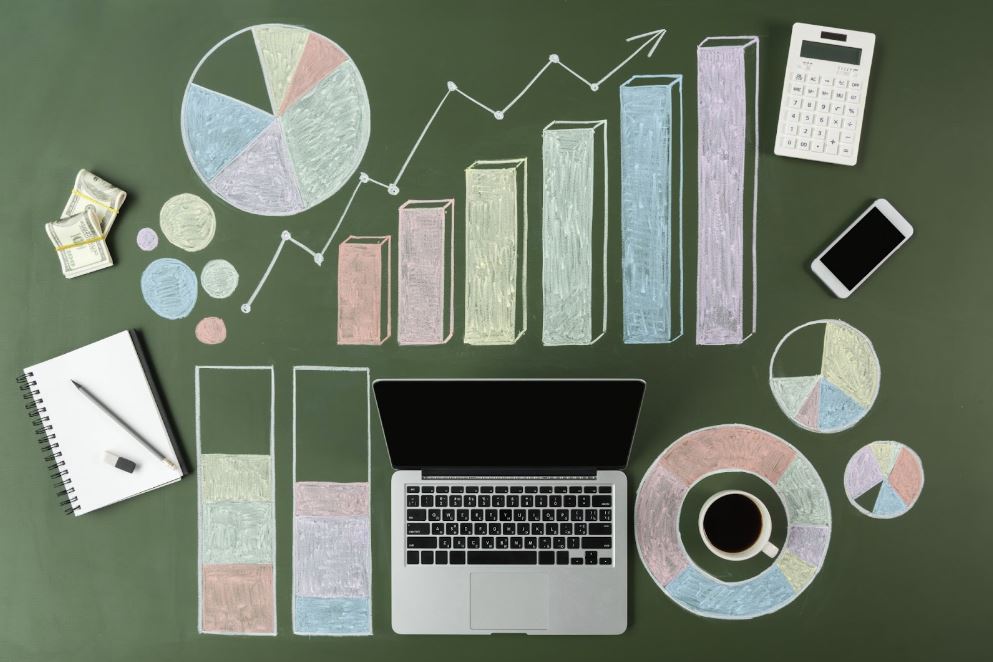Social media analytics is the process of collecting data from social media platforms and analyzing it to make informed business decisions. For small businesses, utilizing social media analytics can be a game-changer, offering insights into customer behavior, engagement, and overall brand performance.
The Importance of Social Media Analytics
Understanding Your Audience
Social media analytics helps small businesses better understand their audience. By analyzing demographic data, interests, and online behavior, businesses can tailor their content and marketing strategies to meet the needs of their target audience. This understanding can lead to more personalized and relevant interactions with customers. Ultimately, it helps build stronger relationships and increases customer loyalty.
Measuring Campaign Performance
Analyzing data from social media campaigns allows businesses to see what’s working and what’s not. This insight helps in optimizing future campaigns for better results. Businesses can fine-tune their strategies by tracking metrics such as engagement, reach, and conversions, leading to more effective and efficient marketing efforts that drive better outcomes.
Competitive Analysis
By monitoring competitors’ social media performance, small businesses can identify trends, successful strategies, and areas where they can outperform the competition. This information can inform strategic decisions and help businesses stay ahead. Understanding competitors’ strengths and weaknesses provides valuable insights for developing unique selling propositions. It also aids in identifying gaps in the market that the business can exploit.
Improving Customer Engagement
Analytics provides insights into how customers engage with content, enabling businesses to improve their engagement strategies. Businesses can create more engaging posts by understanding what types of content resonate most with their audience. Enhanced engagement leads to higher brand visibility and a more active online community, which can result in increased customer satisfaction and loyalty.
Return on Investment (ROI)
Social media analytics helps track marketing efforts’ ROI, ensuring that resources are allocated effectively. Businesses can make informed decisions about their marketing spend by measuring the impact of social media campaigns on sales and other key performance indicators. Acting on this information ensures that every dollar spent contributes to the business’s overall goals. It also helps identify the most cost-effective strategies for maximizing returns.
Setting Up Social Media Analytics
Choosing the Right Social Media Analytics Tools
Several tools available for social media analytics, each offering unique features. Some popular options include:
- Google Analytics: Google Analytics integrates with social media platforms to provide insights into traffic and conversions. It helps businesses track user behavior from social media to their websites, offering a complete picture of the customer journey. Additionally, it can identify which social media channels drive the most traffic and conversions, allowing businesses to allocate resources more effectively.
- Hootsuite: Hootsuite offers comprehensive analytics and reporting for multiple social media platforms. It provides customizable dashboards that enable businesses to monitor key metrics in real-time. Moreover, Hootsuite allows users to schedule posts and manage multiple accounts, making maintaining a consistent social media presence easier.
- Sprout Social: Sprout Social provides detailed analytics, engagement metrics, and competitor analysis. It helps businesses understand their social media performance through intuitive reports and visualizations. Additionally, Sprout Social offers powerful social listening tools to monitor brand mentions and sentiment, aiding in proactive reputation management.
- Buffer: Buffer is an easy-to-use tool that offers insights into post performance and audience engagement. It provides detailed analytics on when your audience is most active, helping optimize posting times. Furthermore, Buffer supports scheduling and publishing across various social media platforms, streamlining content management for small businesses.
Defining Key Performance Indicators (KPIs)
Before diving into analytics, defining KPIs that align with your business goals is essential.Common KPIs for social media include Engagement Rate, which measures the number of likes, comments, and shares divided by the number of followers; Reach, which indicates the total number of unique users who have seen your content; and Impressions, which is the total number of times your content is displayed. Other important KPIs are Click-Through Rate (CTR), representing the percentage of users who click on a link in your post, and Conversion Rate, which measures the percentage of users who take a desired action, such as making a purchase or signing up for a newsletter.
Collecting and Analyzing Data
Data Collection
Most social media platforms offer built-in analytics tools. For instance:
Facebook Insights
Facebook Insights provides data on page likes, post reach, engagement, and audience demographics. It allows businesses to track how their content performs over time and identify trends in audience behavior. Additionally, it offers insights into the best times to post and the types of content that generate the most engagement.
Twitter Analytics
Twitter Analytics offers insights into tweet performance, follower growth, and audience interests. It helps businesses understand which tweets resonate most with their audience by providing detailed metrics on retweets, likes, and replies. Furthermore, it can track mentions and hashtags, enabling businesses to measure their brand’s visibility and reach on the platform.
Instagram Insights
Instagram Insights shows data on post reach, impressions, and follower demographics. It helps businesses analyze how their stories and posts perform, offering insights into the types of content that drive the most engagement. Additionally, it provides data on website clicks and profile visits, helping businesses understand how Instagram contributes to their overall online presence.
LinkedIn Analytics
LinkedIn Analytics provides post performance, page views, and follower demographics information. It helps businesses measure the effectiveness of their LinkedIn content by tracking likes, shares, and comments on posts. Additionally, it offers insights into followers’ professional backgrounds, enabling businesses to tailor their content to better engage with their audience.
Data Analysis
Once data is collected, the next step is analysis, which involves looking for patterns and trends that can inform your social media strategy. Key steps in data analysis include identifying trends by examining which types of content generate the most engagement or which times of day yield the highest reach. Segmenting your audience based on demographics, interests, or behavior can help tailor your content to different audience groups. Benchmarking allows you to compare your performance against industry standards or competitors, helping you identify areas for improvement. Additionally, sentiment analysis of comments and mentions provides insights into how your audience feels about your brand.
Best Practices for Social Media Analytics
Regular Monitoring
Consistent monitoring of social media analytics is crucial. Set up a schedule to review your analytics regularly, whether weekly, bi-weekly, or monthly. This schedule ensures you stay on top of trends and can make timely adjustments to your strategy.
Experimentation and Testing
Don’t be afraid to experiment with different types of content, posting times, and engagement strategies. Use A/B testing to compare the performance of different approaches and refine your strategy based on the results.
Actionable Insights
Focus on deriving actionable insights from your data. Instead of just looking at numbers, ask what they mean for your business and how you can use that information to improve your social media strategy.
Custom Reports
Create custom reports that highlight your business’s most important metrics. Share these reports with your team to keep everyone aligned on performance and strategy.
Audience Feedback
Use analytics to gather feedback from your audience. Pay attention to comments, direct messages, and other forms of engagement to better understand their needs and preferences.

Leveraging Social Media Analytics for Growth
Content Strategy
Use insights from social media analytics to inform your content strategy. Identify the types of content that resonate most with your audience and focus on creating more of it. Consider using a mix of content formats, such as images, videos, and blog posts, to keep your audience engaged.
Campaign Optimization
Analyze the performance of your social media campaigns to see what’s working and what’s not. Use this information to optimize future campaigns for better results. For example, if video content performs better than image posts, you might want to allocate more resources to video production.
Audience Engagement
Engage with your audience based on insights from your analytics. If you see that your audience is most active during certain times of the day, schedule your posts accordingly. Respond to comments and messages promptly to build stronger relationships with your followers.
Influencer Collaboration
Social media analytics can help identify potential influencers who align with your brand. Look for influencers who have a significant following and high engagement rates. Collaborating with influencers can help increase your reach and credibility.
Challenges and Solutions in Social Media Analytics
Data Overload
One of the biggest challenges in social media analytics is dealing with data overload. With an abundance of data available, it can be overwhelming to know where to start. The solution lies in focusing on the KPIs that matter most to your business. Utilizing tools with customizable dashboards and reports can help you visualize the data most relevant to your goals, making navigating and acting on the information that truly impacts your business easier.
Keeping Up With Algorithm Changes
Social media platforms frequently update their algorithms, impacting the reach and engagement of your content. Staying informed about the latest algorithm updates is essential to navigating these changes effectively. Following industry blogs and news sites and adjusting your strategy as needed will help you stay in line with best practices and maintain the effectiveness of your social media efforts.
Measuring ROI
Measuring the ROI of social media efforts can be challenging, especially for small businesses with limited resources. To address this, use UTM parameters and track conversions through tools like Google Analytics, which will help you see how social media traffic impacts your bottom line. Focus on direct and indirect ROI, considering factors like brand awareness and customer loyalty, to understand your social media effectiveness comprehensively.

Learn More About Social Media Analytics for Small Businesses
Social media analytics is invaluable for small businesses looking to improve their online presence and drive growth. By understanding and leveraging the power of analytics, small businesses can make informed decisions, optimize their strategies, and ultimately achieve better results.
To get started, choose the right tools, define your KPIs, and commit to regular monitoring and analysis. Experiment with different approaches, derive actionable insights and stay informed about industry trends. By doing so, you’ll be well on your way to mastering social media analytics and unlocking the full potential of your social media efforts.
For more tips and best practices on social media analytics, visit our BrandRep blog. We regularly share insights and strategies to help small businesses thrive in the ever-evolving digital landscape.








